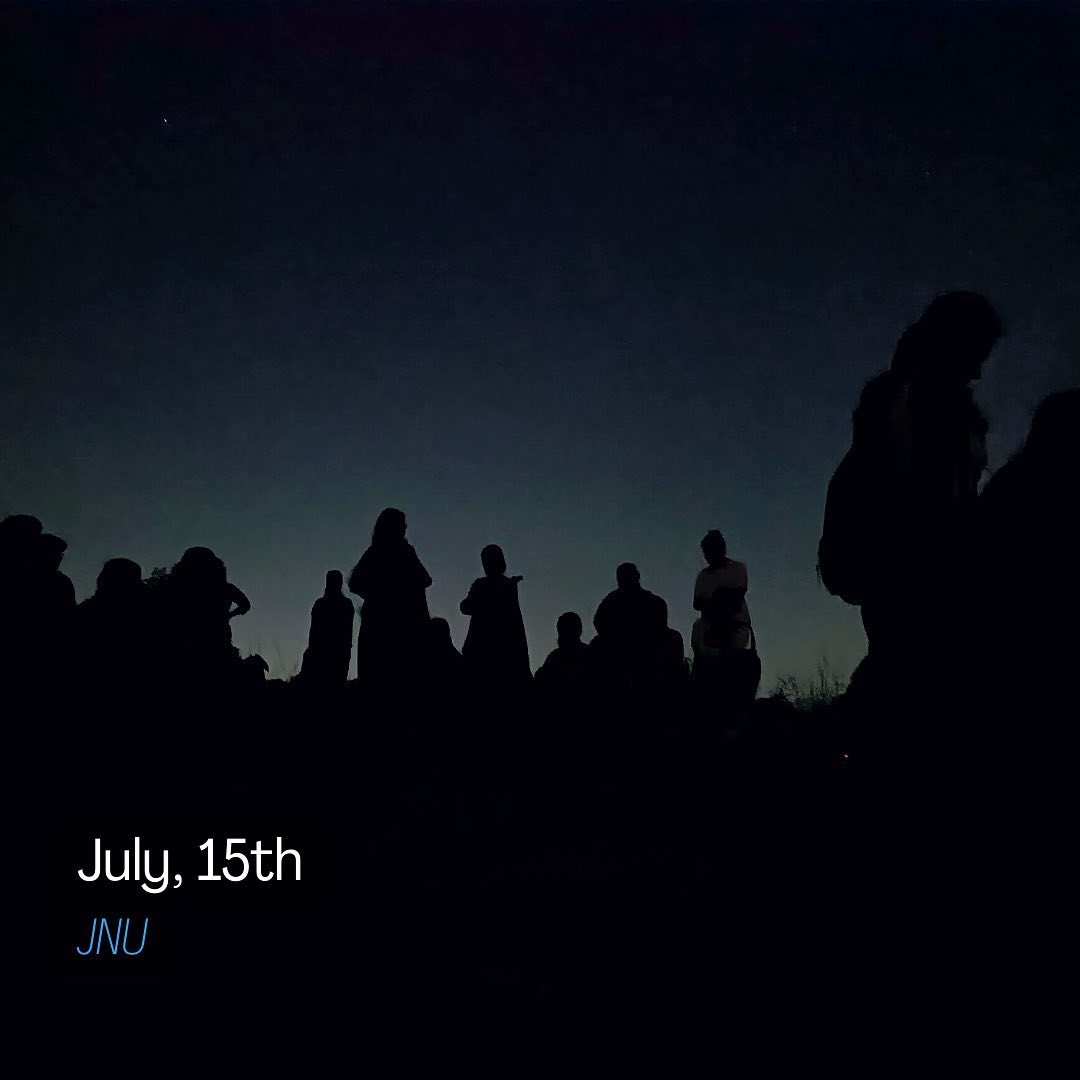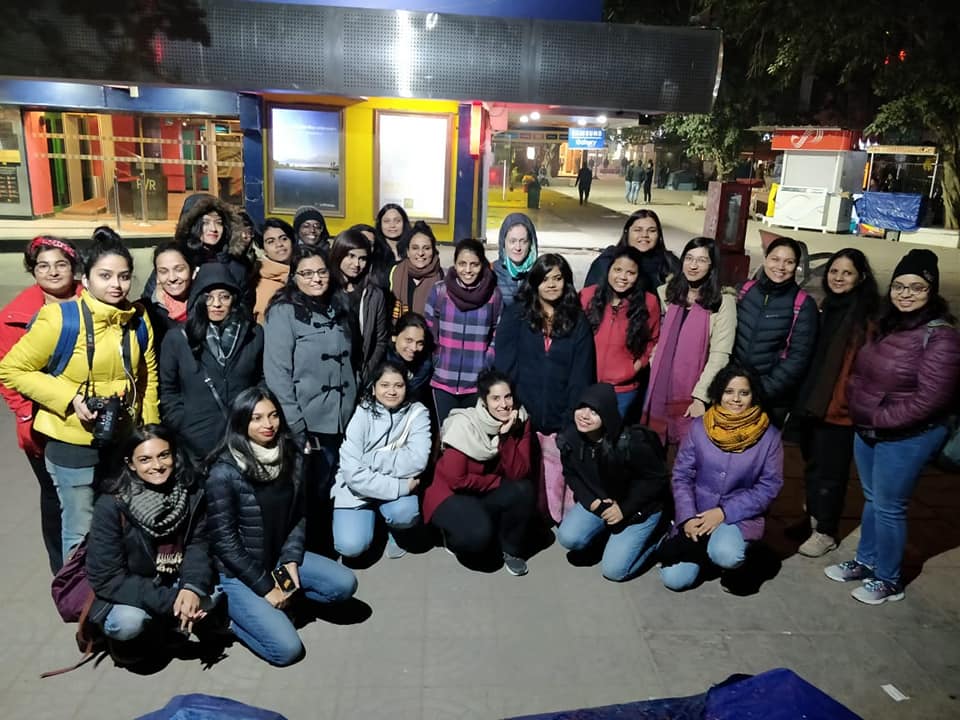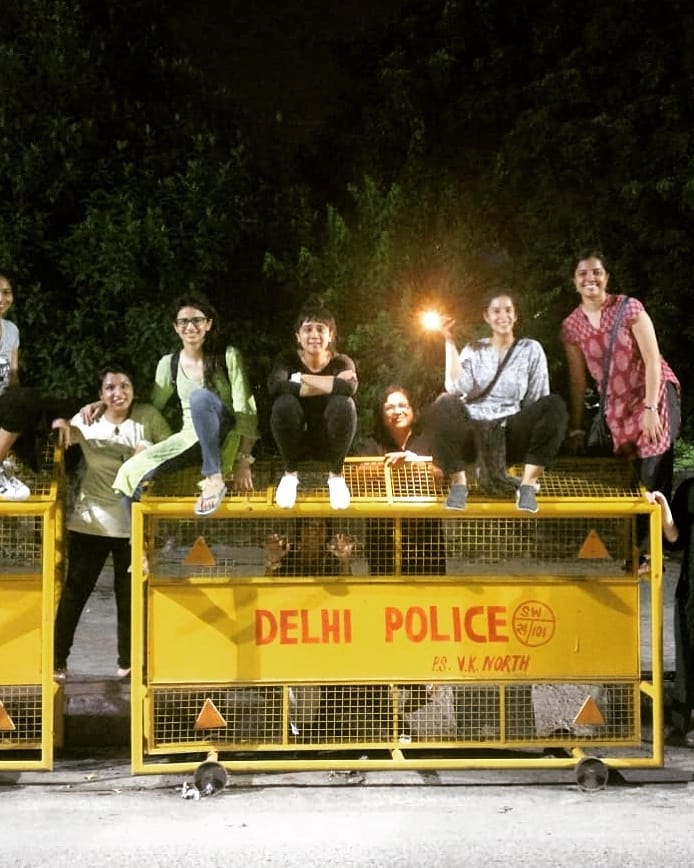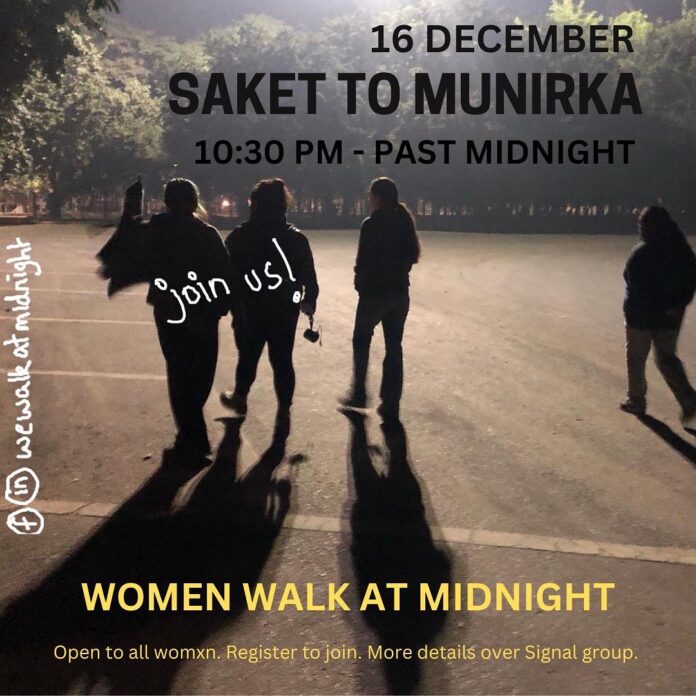Aatika S. |TwoCircles.net
It’s been seven years that the group- Women Walk at Midnight has been walking in various cities. For Mallika Taneja, the person who initiated “Women Walk at Midnight”, the group is not a collective but rather an artistic practice. “We are a completely voluntary act.” She was trying to do a twenty-four-hour walk in the city six years ago. At the time, she was interested in questions of fatigue, endurance of the body, and their relationship to feminist practices. “But then I realized that I couldn’t walk alone at night while doing this practice.”
So she put a call out for a walk and the first walk had both men and women. Her endeavor has over the years found an audience, resonance, participation as well as ownership. “The discourse around the layered meaning of the words woman, midnight, and walking was also just beginning then,” Mallika adds.

Drawing Invisible Lines on Streets
The various small ephemeral collectives that are formed on the night of the walk indicate that the idea of freedom to walk means different things to different women. For Mallika, it is the image of drawing invisible lines on the streets of the city.
Mallika further adds, “As more people joined, we reached newer areas. Our discussions also grew with more questions. A sense of collective was being formed. In 2019 we did many regular activities, but the covid-19 pandemic shook everything. I still cannot walk alone at night in Delhi because I don’t feel safe.” She says that the dynamics of walking during the day and night also vary vastly. “Cities are not built for leisure and pleasure, especially for women. Hence getting on the streets feels like going to war. The gaze becomes one of the most violent acts done to women every day.”
Walking at Midnight in the Crime Capital
Aman Mohammadi, a Ph.D. student at the School of Arts and Aesthetics, JNU joined the team in 2022. She says, “The entire idea behind the group is about women walking together at midnight. The significance is also about walking in Delhi as it is the crime capital. Traveling at night alone is one of the most difficult tasks for a woman. Hence, we aim to build community. We are always trying to create a space for each other where we can share our vulnerabilities as well as strengths.”
New chapters of “Women Walk at Midnight” are opening up steadily in different cities. However, caste and class diversities remain marginally represented in the team.

Mallika says, “Our power and hierarchies are apparent. This is also one of the reasons that we can talk to the police in a certain way and carry on. The aim is to strive towards better inclusion with renewed possibilities. The point could be to make a woman from a different political ideology walk with me. Also, we must ask what does walking even mean for a person with disabilities?”
Reclaiming the JNU Campus
Rakshanda Afrin, a participant in the JNU walk, was aware of the Women Walk at Midnight community and took part in two walks previously in pre-covid times. The walk in JNU was important for her because it was an exercise to proclaim the gendered and segregated spaces in the campus given the JNU administration was taking advantage of the pandemic and came down heavily upon the accessibility of the campus.
“It did not allot hostels to us for a very long time, put restrictions on the timings of dhabas, and allowed random long hours of DJ nights which includes hateful and misogynist songs to certain groups, and in general created an insecure atmosphere to curb student movement, dialogues, and solidarity,” Afrin says.

During the walks the conversations range from politics to food along with walking. It is quite liberating for the participants. The aim remains to bring together as many women as possible in different cities across age, caste, and class.
Bewildered Look on Men’s Faces
Each walk brings with it new insights and experiences. What remains constant are the bewildered look on men’s faces upon seeing a group of women just walking together at midnight.
“It is the same amused look we have seen on people’s faces in other cities as well. There have been walks where the police have questioned us or the men have. We have also encountered harassment. It remains a challenge. The 16 December walk has been one of the longest ones for me, but also the most sensitive one”, says Aman.
Jyoti Singh was gang raped on the same day in 2012. The team walks on the same route as the one that Jyoti took since that year. “We all had an exhaustive experience that day once the walk ended in Munirka, especially knowing the reason behind it. The discussion left an indelible mark on all of us. There was a very heavy feeling in the end.”

Aman has been a regular to the walks and the team’s other initiatives especially theatrical shows after her first walk in Vasant Kunj. She signs off by saying, “Insha Allah, one day we’ll be able to simply walk without caring what place and time it is.”
As atrocities and violence against women and other sexual minorities keep increasing, the urgent need for such initiatives and other forms of safe spaces also rises at the same time. In the end, Mallika says, “I hope for this practice to multiply and become its creature.”
Aatika S. Is a fellow at SEEDS-TCN Mentorship program.
SUPPORT TWOCIRCLES
HELP SUPPORT INDEPENDENT AND NON-PROFIT MEDIA. DONATE HERE


